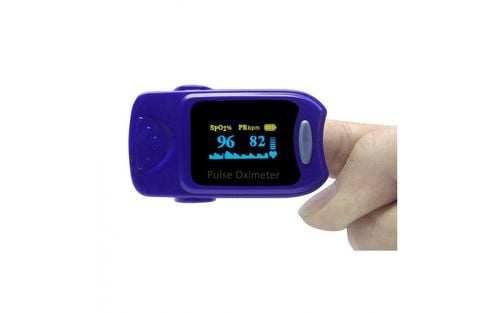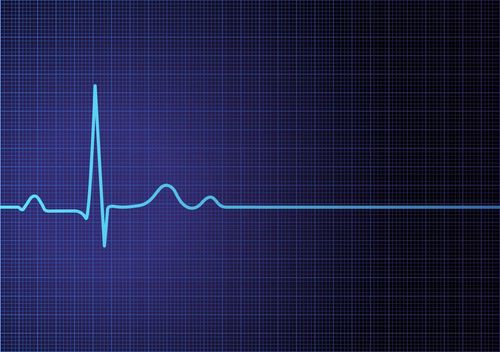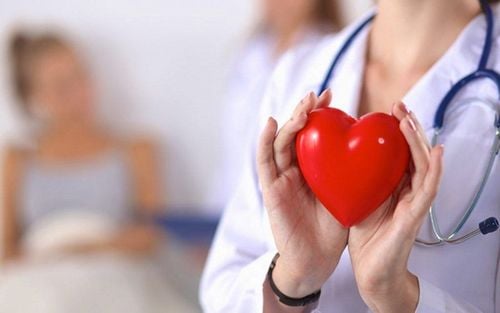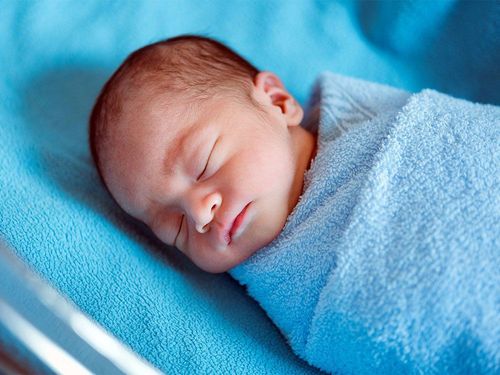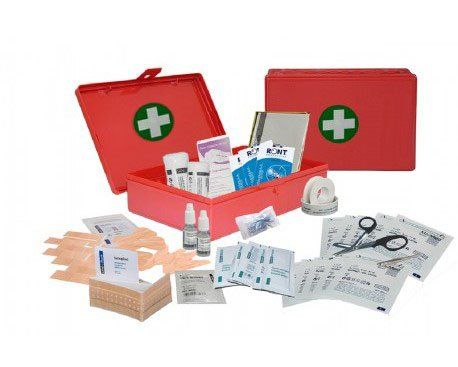This is an automatically translated article.
The article is professionally consulted by Master, Doctor Tong Van Hoan - Emergency Medicine Doctor - Emergency Department - Vinmec Danang International Hospital. Doctor with 10 years of experience in the field of Emergency Resuscitation.CPR and extra-thoracic heart massage are the most basic first aid methods when encountering a person in cardiac arrest or asphyxiation. However, the most important thing that determines the effectiveness of first aid is that the rescuer must know how to perform CPR.
1. What are the common causes of cardiopulmonary arrest?
Cardiac causes: Myocardial ischemia, acute coronary occlusion; cardiomyopathy, myocarditis; trauma causes acute cardiac tamponade, direct stimulation to the heart. Circulatory causes : Acute circulatory volume deficiency (types of shock); pulmonary embolism (due to air, due to embolism); vagus reflex mechanism. Respiratory cause : Severe pneumothorax ; acute hypoxia (usually causing asystole): mining accidents, burying, asphyxiation in closed rooms; superiority. Causes of metabolic disorders: disorders of potassium metabolism, acute hypercalcemia, acute elevation of catecholamines, hypothermia. Drug-induced, intoxication : The direct effect of the drug causes cardiac arrest; side effects of the drug in general. Electric shock, drowning; foreign body obstructing the airway.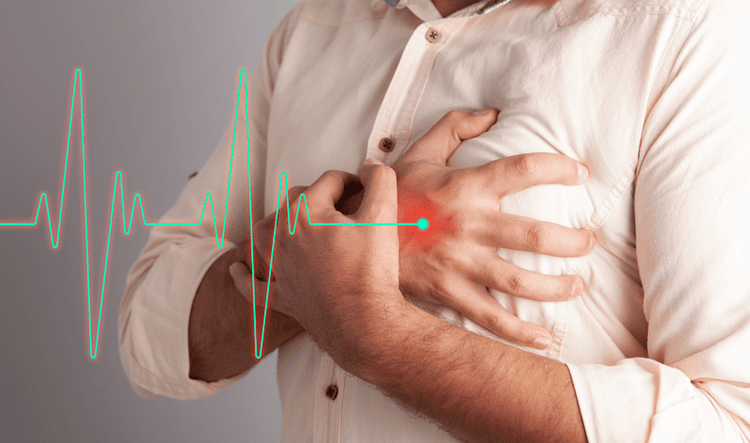
2. Recognizing cardiac arrest and apnea
Cardiac arrest (circulatory collapse) is an emergency where the heart muscle no longer contracts and the heart stops beating completely, which results in blood circulation in the body being stopped and organs not being supplied. oxygen to function.Apnea (respiratory arrest or asphyxiation) is also an emergency, because for some medical reason the victim is no longer breathing. Apnea may not be accompanied by cardiac arrest, but if the victim stops breathing for too long, it can lead to accompanying cardiac arrest.
The signs to identify a victim with complete respiratory arrest include the following 3 basic signs:
Loss of consciousness: determined when calling to ask the victim does not respond, no awakening reflex. Apnea or yawn breathing: determine when the victim's chest and abdomen are completely without breathing movements. Cardiac arrest: loss of carotid or inguinal pulse. In addition, the victim also has other symptoms such as: pale or cyanotic skin, dilated pupils and loss of pupillary reflex to light, if the victim has a wound, blood will be seen in the wound purple black and stopped bleeding. ..
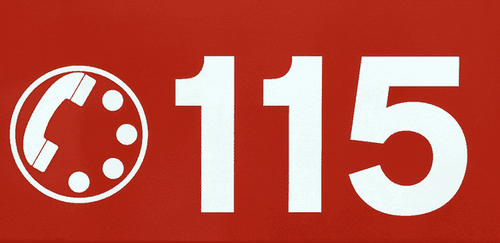
3. What are the steps involved in first aid for cardiopulmonary arrest?
3.1 Remove the agent causing cardiopulmonary arrest When detected, it is necessary to quickly approach the victim, remove the agent causing the cardiopulmonary arrest, and take the victim out of the danger zone (drowning, electric shock...).3.2 Assess consciousness, stimulate the heart, wake the victim As soon as it is identified or informed that someone has suddenly lost consciousness, it is necessary to quickly assess consciousness, call and ask the victim loudly with 2 questions: what is your name?" and “How are you?” ; Simultaneously, use your hand to slam on the patient's chest or press firmly on the breastbone (mid-chest area) to stimulate the heart and wake up the victim.
3.3 Alarm, call for help Along with cardiac stimulation and awakening the victim, immediately call paramedics; Call briefly, loud enough and enough information in the following order: The patient is in... (eg, in the kitchen, in the garden...), suddenly unconscious, in need of urgent emergency assistance!
3.4 Emergency organization Cardiopulmonary arrest emergency is started as soon as a suspected case of cardiopulmonary arrest is detected. The rescuers have just approached the patient, called for help, and started basic CPR measures right away. When there are many first responders, one person should be the commander to assign and organize first aid in the correct order and synchronization. It is important to keep in mind when to approach the patient and initiate emergency care. Establish an emergency space that is large enough and minimizes non-emergency people entering and obstructing emergency work. Quickly place the patient on a firm surface so that basic CPR can be performed. 3.5 Implement the appropriate method of cardiopulmonary resuscitation Currently there are many methods of emergency cardiopulmonary arrest that can be applied, first responders need to choose the method based on the cause of the cardiopulmonary arrest and the specific patient. suitable for the most effective first aid.
4. Methods of chest compressions, rescue breathing
Is a basic cardiopulmonary resuscitation technique, including 3 steps4.1 Airway control Place head up, neck flexed, lower jaw pull/chin lift. In case of suspected or confirmed cervical spine injury, do not perform jaw-lift/chin-lift procedure. Remove sputum or foreign bodies from the mouth if present. Perform the Heimlich maneuver if an airway foreign body is suspected. 4.2 Breathing support If the patient is not breathing, give rescue breaths or inflate the balloon twice in a row, then check the pulse. If pulse is present: continue to give rescue breaths or squeeze balloons. If there is no pulse: perform a cycle of chest compressions, give rescue breaths in the ratio of 30/2. Note: The artificial breathing rate (breathing or squeezing the balloon) needs to be sure to blow in for 1 second, enough to make the chest inflate visible with a breathing rate of 10-12 times/minute. Connect oxygen to the balloon as soon as oxygen is available.
4.2 Chest compression Check the carotid pulse for 10 seconds. If there is no pulse: perform chest compressions immediately. Chest compressions at 1/2 below the sternum, 1/3 - 1/2 of the chest (4 - 5 cm for adults) enough to palpate the pulse when squeezing; frequency 100 times/min. The motto is to press fast, press hard, without interruption, and let the chest fully inflate after each squeeze. Compression/breathing ratio is 30/2 (30 compressions, 2 breaths) Check pulse within 10 seconds after every 5 compressions, give rescue breaths (1 cycle is 30 compressions/2) breaths) or every 2 minutes. Continue resuscitation for cardiac arrest until the victim has regained vital signs, checking for signs every 2 minutes and taking care not to interrupt for more than 10 seconds. Stop the above movements if the patient is sure to die and the ability to rescue is no longer effective. As soon as the patient can breathe on his own, it is necessary to quickly take him to the nearest medical facility to continue emergency resuscitation. Artificial respiration for adults is an important emergency resuscitation technique, helping patients in cases of accidents, asphyxiation, cardiac arrest have a good prognosis. Therefore, in some emergency cases, everyone should equip themselves with these first aid knowledge and skills.
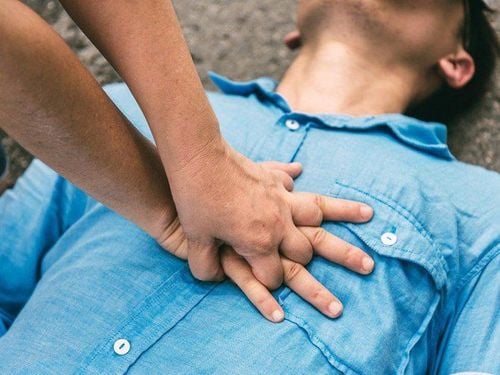
Please dial HOTLINE for more information or register for an appointment HERE. Download MyVinmec app to make appointments faster and to manage your bookings easily.





